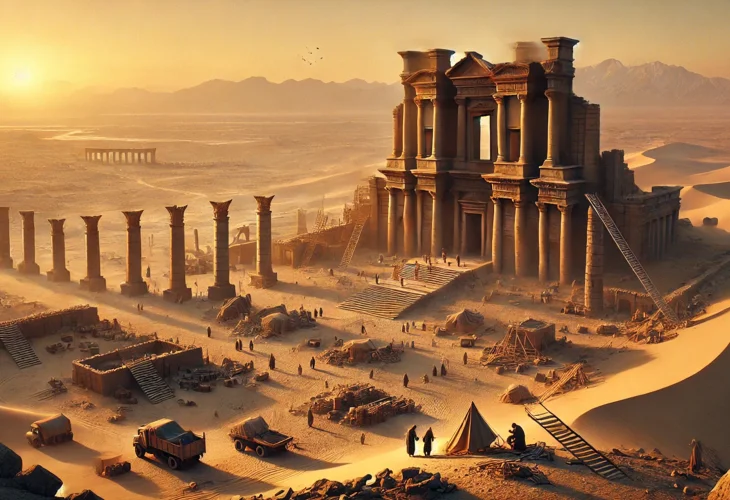The Enigmatic Kingdom of Tadmor: Rediscovering an Ancient City
Around nine years ago, ISIS captured the city of Palmyra in Syria. The unique history of Palmyra had been forgotten for many generations. It was only in modern times that its ancient ruins began to attract tourists and archaeologists. However, those familiar with our sources can learn about the entire history of the city, originally known as Tadmor.

Around nine years ago, ISIS captured the city of Palmyra in Syria. Many of its residents were brutally executed, in the usual cruel manner of ISIS. The cultural world watched anxiously over the museum in Tadmor and its exhibits. It is known that ISIS destroys historical artifacts, and Palmyra houses historical treasures. A special force succeeded in smuggling some of the exhibits to safety until ISIS was defeated and left the area.
The unique history of Palmyra had been forgotten for many generations. It was only in modern times that tourism and archaeological digs began exploring its ruins. However, those familiar with our sources can learn about the entire history of Palmyra, originally known as Tadmor.
King Solomon established Tadmor, as it is written, "He built Tadmor in the wilderness," according to the prophet. The Midrash tells us, "Solomon had a great eagle, on which he traveled to Tadmor in the desert in one day and returned on the same day."
Josephus describes: "Solomon penetrated into the upper Syrian desert and, after conquering it, established a very large city two days' journey from Upper Syria and one day's journey from the Euphrates, and six days' journey from great Babylon. The reason for founding a city at such a distant location from the populated regions of Syria is that beyond there is no water anywhere. Only at that place are springs and wells found. After building this city and surrounding it with strong walls, he named it Tadmor, and the Syrians call it by this name to this day, but the Greeks call it Palmyra."
The Talmud describes that descendants of Solomon's servants settled in Tadmor. It is also noted that during the destruction of the First Temple, the Tadmorites participated in the plundering of Jerusalem and repeated this behavior during the destruction of the Second Temple, as the Midrash Eicha states: "Rabbi Yochanan said; Blessed is he who saw the downfall of Tadmor. Why? It was complicit in two destructions. Rabbi Yudan said during the first destruction they placed 80,000 archers, and in the second, 40,000 archers. Rabbi Huna said, in the last destruction they acted like in the first." Therefore, the sages decreed, "We do not accept converts from the Tadmorites."
During the time when sages lived in Babylon, the Tadmorites were known as timber traders there and were even used as a time marker for lighting the Chanukah candles, "until the feet of the Tadmorites leave the market."
Not long after Rabbi Yochanan, the children of Israel indeed witnessed the downfall of Tadmor. In the early third century CE, the Tadmorites grew powerful, and Queen Zenobia established an empire called the Tadmorite Empire, seizing many parts of the Roman Empire. Roman Emperor Aurelian waged war against Tadmor, conquered it, and left a garrison. If the Tadmorites had surrendered, they would have survived, but they exploited Aurelian's departure and killed the garrison. When Aurelian heard of this, he returned with his army, destroyed all the inhabitants of the city, demolished the towers and walls, and left the city in ruins. That was the end of the proud Tadmorite nation.
But the story of Tadmor does not end there. Many centuries later, brave Jews revived Tadmor's ruins and created a kingdom of their own, as reported by traveler Benjamin of Tudela: "The city of Tadmor is surrounded by a wall and lies in the desert, four days' journey from settlement. In Tadmor are about two thousand Jewish warriors who fight against the children of Edom and Arabia under the rule of King Nur al-Din, and they aid their Muslim neighbors. At their head are Rabbi Isaac the Greek, Rabbi Nathan, and Rabbi Uziel." This kingdom achieved remarkable feats but did not last long, and so Tadmor faded from memory, covered in dust, unknown to the world until modern archaeological explorations began.

